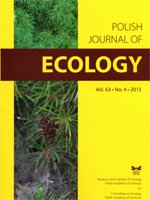We tested the influence of nest concealment (vegetation type, density and height), water depth and nest distance from the bank on predation rates upon simulated nests of the water rail (Rallus aquaticus) and the little crake (Porzana parva). Broods of both rallids were simulated by real and wax-filled quail (Coturnix coturnix) eggs coloured typically for each species. Three grades of nest concealment were used: uncovered nests located on wooden floating boards, nests hidden in littoral vegetation and nests hidden under a plastic mesh covered with plants, which made them invisible from the air. Concealment proved to have a stronger impact on the fate of artificial nests than water depth; 95% of the nests on boards were depredated after one week of exposure. Nests attached to a peg at water level and hidden in vegetation had survival rates of 18 and 22%, after three weeks of exposure in two experiment repetitions. In 2012, we found significant differences between survival rates of nests located in different types of vegetation after the first week of the experiment: nests in bulrush (Typha spp.) had a higher survival rate than nests in sedge (Carex spp.) and common reed (Phragmites australis), and nests in sedge had a better survival rate than nests in reed. Those differences disappeared after the end of the experiment. In 2013, nests located in sedge (Carex spp.) had a better survival rate than nests located in bulrush (Typha spp.) or the common reed (Phragmites australis). Covering nests with plastic mesh and plants increased nest survival up to 38% after a three-week-long exposure period. Potential nest predators were monitored: mammals (mustelids and rodents) using live traps and birds by observation of their hunting activity. Filling quail eggshells with wax allowed us to identify the marsh harrier (Circus aeruginosus) as the main nest predator — in 67% of depredated nests, wax eggs carried marks of a raptor beak. American mink (Neovison vison) and the water vole (Arvicola amhibius), though abundant in the study area, were not important nest predators, as only a few bite marks of these mammals were recorded.
How to translate text using browser tools
1 December 2015
Predation on Artificial Nests Imitating the Broods of Two Rallid Species: The Influence of Habitat Features
Piotr Chibowski,
Marcin Brzeziński,
Jan Jedlikowski
ACCESS THE FULL ARTICLE

Polish Journal of Ecology
Vol. 63 • No. 4
December 2015
Vol. 63 • No. 4
December 2015
Little Crake
littoral vegetation
Marsh Harrier
nest concealment
Water Rail
water vole




